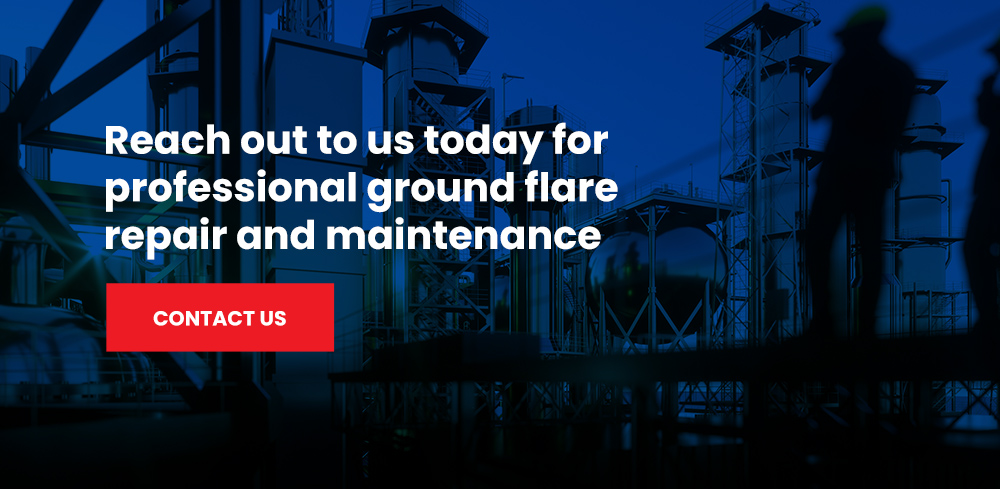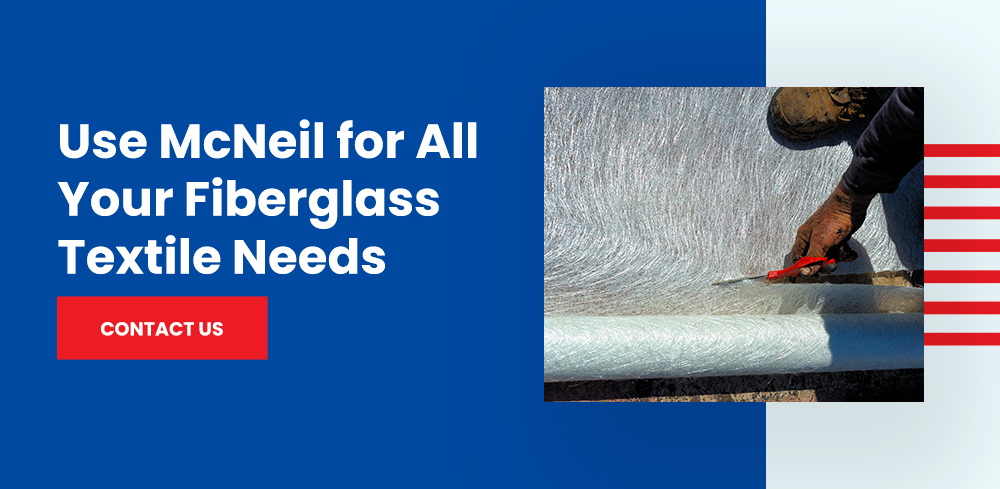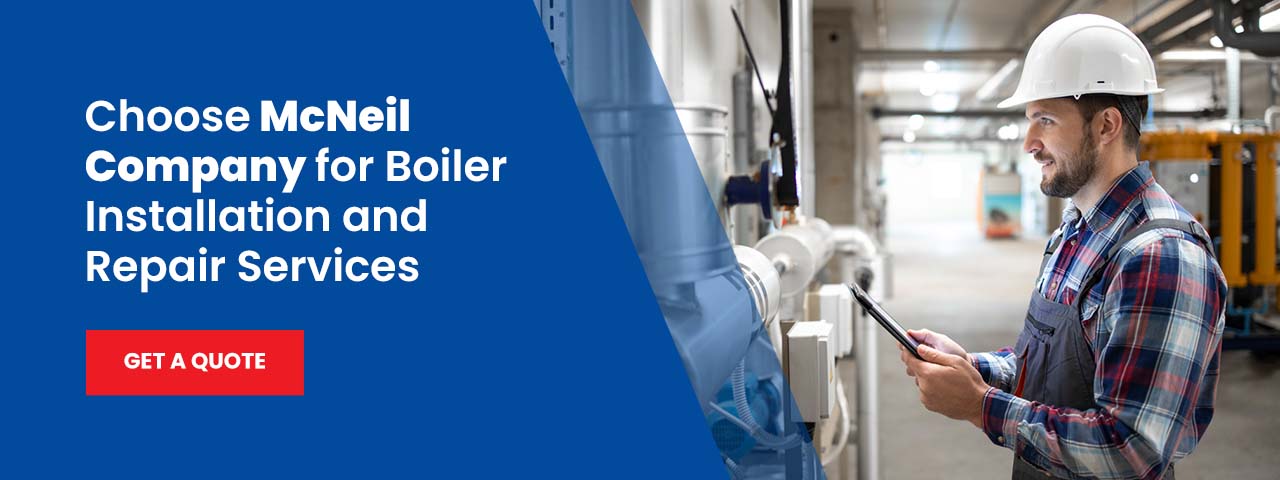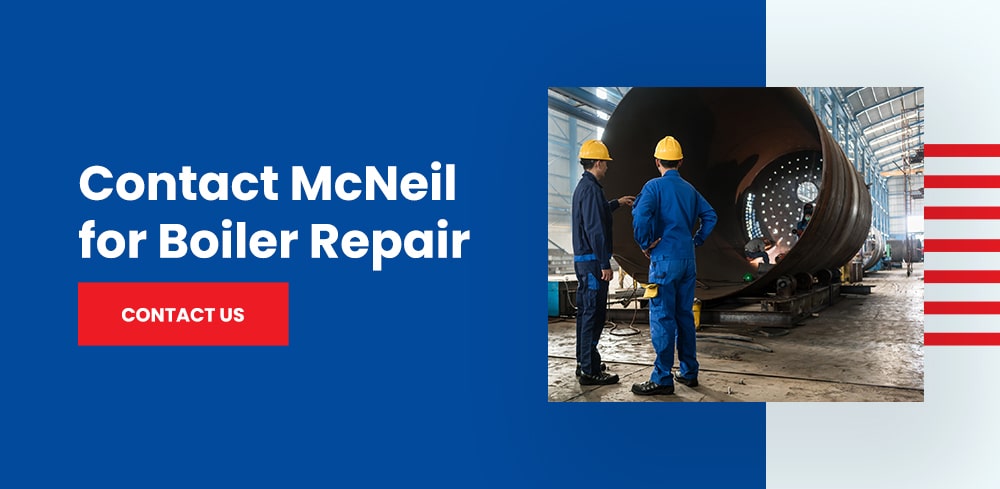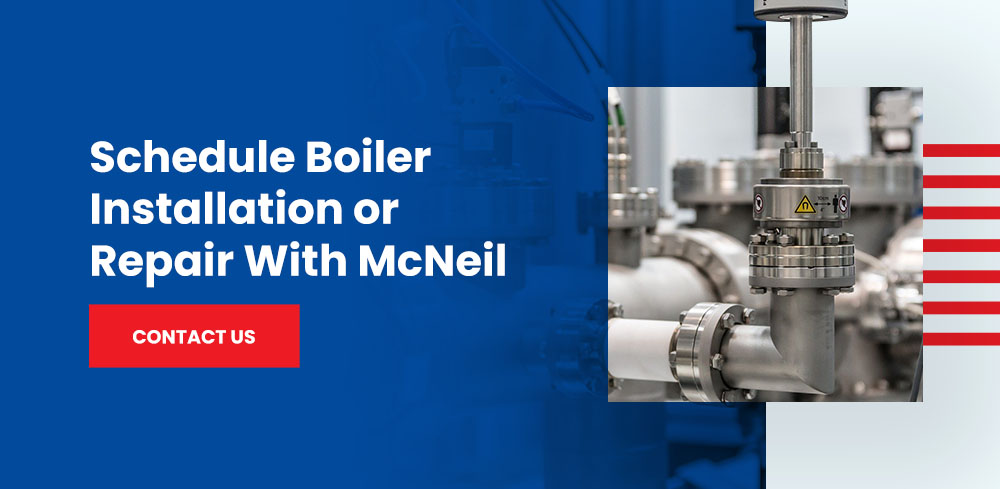A Guide for Ground Flare Repair
Ground flare systems offer unique benefits and challenges to industrial facilities. As one of the most important parts of an industrial plant, flare systems enhance safety for workers and the environment. Like every other well-used system, they need regular maintenance and occasional repair.
Repairing a ground flare system can be expensive since it requires all plant operations to stop. Keep reading to learn more about the different components of a ground flare system, which parts may require maintenance and how you can best handle the repair process.
Flare Design and Types
Several types of flare systems are used across industries. They can be divided first based on height. Many flares are elevated so their ignition source remains far away from other parts of the industrial compound. Ground flares are built in their own area with a radiant heat fence for similar protective reasons.
Industrial plants sometimes use assistance in the form of steam, air or pressure to improve mixing at the flare tips in their compound. Steam- and air-assisted flares are often elevated for safety reasons, but non-assisted, pressure-assisted and multipoint pressure-assisted flares can be built at elevation or ground level.
There are several structural models for ground flares. Some ground-level flares are enclosed, while others have an open-flame design. Enclosed ground flares are built inside an insulated shell. This protects the flares from wind disturbance and reduces both heat radiation and visible light during the flare process.
Open-flame ground flares are built with a radiant heat fence and tend to cover more ground than enclosed ground flares. The open-flame design has a higher capacity for venting gases, while the enclosed design is often chosen for plants that need a lower, constant flow for vent stream.
When Is a Ground Flare System Best?
The best flare design for your facility depends on several factors, including:
- Type of flare gas.
- Amount of available space.
- Cost-efficiency.
- Safety factors.
- Community concern.
Many communities don’t understand that flares are a sign of environmental protection — these flames are created because your plant has burned off toxic gases and is releasing healthier ones into the atmosphere instead. Covering flares with a ground design can increase community peace of mind.
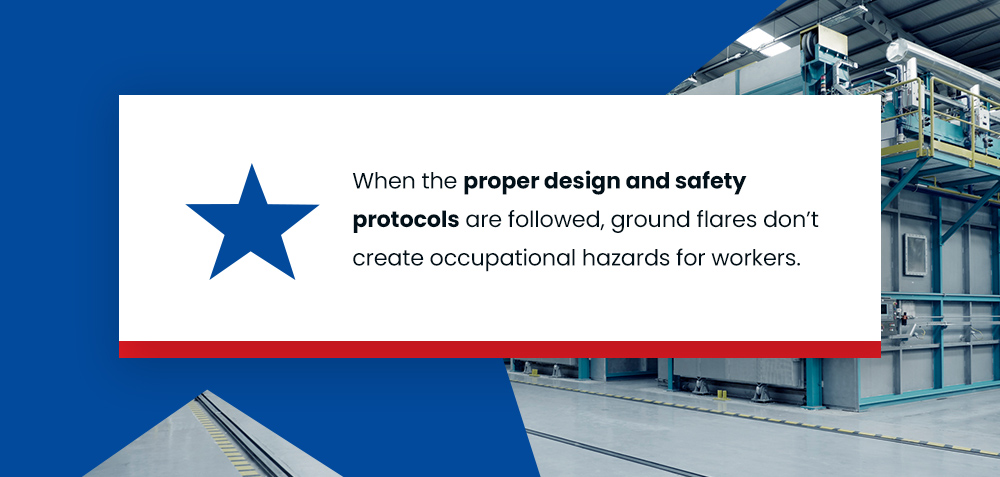
When the proper design and safety protocols are followed, ground flares don’t create occupational hazards for workers. Radiant heat shields protect employees during maintenance, and plant layout design keeps ignition sources away from the rest of the operation.
Understanding the Components of a Ground Flare
Ground flares have several components, depending on whether they’re enclosed or open-flame. The largest difference between ground flares and elevated flare systems is that ground systems don’t have a stack or other mechanisms to support the elevation of gases.
Here’s a quick list of common ground flare components:
- Relief valves
- Knock out drum
- Liquid seal
- Piping
- Gas pilot
- Pilot reignition system
- Smoke suppression assist system
- Refractory wall or radiant heat shield
To optimize your plant, ground flare systems may have small variations in design. It’s wise to work with a professional who can design the safest and most efficient ground flare system to meet your needs. Make sure you understand every element of the design and how they work together.
Step-by-Step Guide for Ground Flare Repair
Over time, these components will require maintenance to ensure they continue operating at top performance levels. Because flares are part of your compound’s safety system, they’re incredibly important.
Each component should be checked and serviced on a regular schedule to prevent issues with the flare system and your plant at large. However, even with regular checks, sometimes repair is necessary. Parts wear out over time, and it’s better to discover this during maintenance than to experience an interruption in regular workflow.
Assessing the Damage and Preparing for Repair
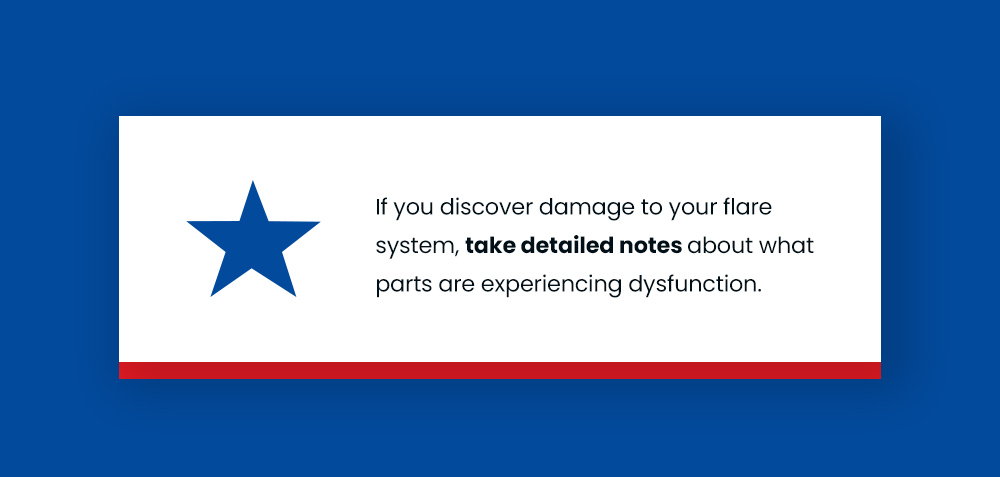
If you discover damage to your flare system, take detailed notes about what parts are experiencing dysfunction. Each piece of the system is essential for safe and reliable operation. Here are a few examples of issues you might encounter:
There could be external damage to components, either from weather or years of use. Check the following:
- Refractory lining
- Radiant heat shield
- Piping and pilots
- Assist systems
There could also be internal problems with the system, reducing function and safety. To find out, ensure that:
- There’s no air in the system.
- All filters and valves work.
- Pipe slopes allow for gas flow.
- Each component works well.
You can check for external damage by visually checking each component of your ground flare system. Of course, workers should never be inside the system while it’s functioning. Visual checks should be fast, easy and uncomplicated — to anyone who’s familiar with the industry, external damage should be obvious.
To check for internal issues, you’ll need to schedule an inspection. Workers may also notice changes in system behavior or reduced performance levels, which can give clues as to what is happening. If you’re concerned about performance changes, it’s a good idea to have a professional inspect your system.
Once you’ve noted all damage, the next step is to schedule repairs for your ground flare system. When every component is working at its best, the system will continue to perform safely and support top production at your industrial compound.
Maintenance Tips to Prevent Future Repairs
To reduce the potential for damage and repair costs, conduct regular maintenance for your ground flare system. Both enclosed and open-flame systems have specific strengths and weaknesses, and eventually, parts will wear out.
However, like other machines, ground flares last longer and perform better with regular checks. The legal requirements for flare inspection depend on the flare design, your facility’s purge rate, the age of your plant and more. You should take advantage of every opportunity to have your flares inspected.
Why Choose McNeil for Ground Flare Repairs?
McNeil has served customers with heat-management services since 1937. When you partner with us, you partner with a team of highly experienced professionals. We offer construction and installation services across a number of industries, including:
- Chemical and mineral plants.
- Refineries.
- Power generation companies.
- Steel and aluminum plants.
- Waste-to-energy companies.
We specialize in refractory lining design and installation for gas ground flares, vapor combustion systems (VCUs) and vapor recovery units (VIRUs). We can create and install a customized lining for your flare system. Using assistive technology, McNeil can run a heat flow simulation so your new lining exactly meets your needs.
McNeil uses all high-temperature rated anchoring systems and can provide scaffolding inside units. We’re committed to high-quality work, safety and professional communication throughout the process. Reach out to us today for professional ground flare repair and maintenance!
McNeil’s Commitment to Safety
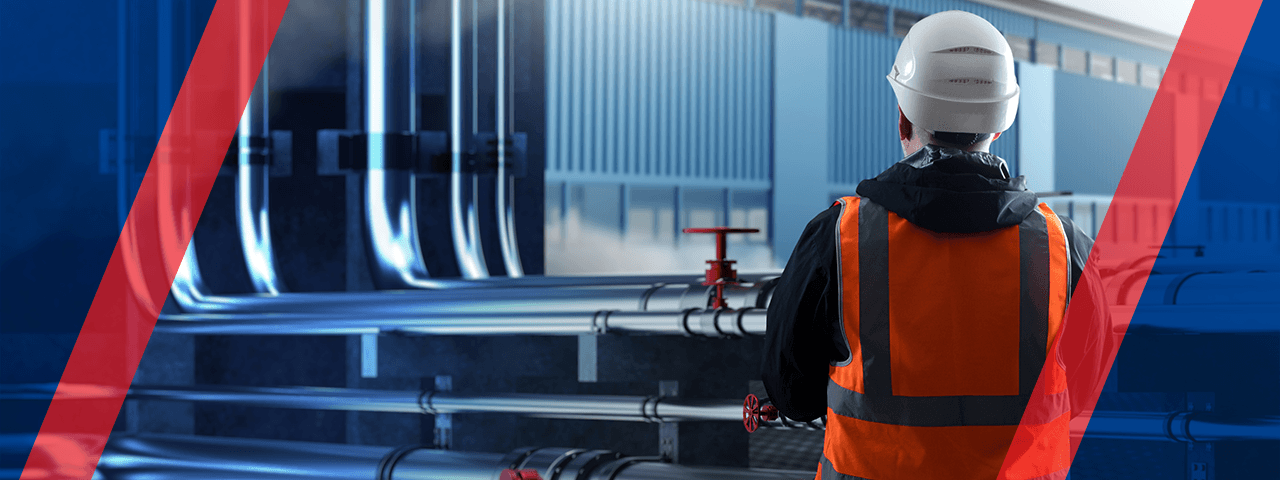
Safety is vital for any industry. When dealing with boiler and refractory safety, it’s essential to partner with a company that puts safety first. Safer policies and procedures mean more efficient work, better results and less downtime. If you want to get the job done right, trust a company that invests in employee safety. At McNeil, we have extensive safety policies in place to help protect our team and give you the best results possible.
General Safety
In addition to following general safety rules McNeil personnel are certified in
- OSHA 10
- Confined space training.
- Hot work.
- Forklift and aerial training.
- Excavation and shoring training.
- Respirator fit testing.
- Rigging
- TWIC
- Process safety management. (PSM)
Safety is a central focus at McNeil. We focus on the well-being of our employees and clients through our commitment to strict safety measures. Our comprehensive approach to safety ensures our workforce gets expert training, keeping them safe on the job. Our general safety guidelines educate employees on job safety in compliance with Occupational Safety and Health Administration (OSHA) regulations.
McNeil employees receive thorough training in all general safety standards. We emphasize safety, communication and vigilance. Our safety suggestion program encourages team members to contribute to enhancing safety protocols. With this practice, we can evolve our safety standards to create a constantly improving operation. This collaborative effort keeps our safety approach dynamic and responsive.
General safety training at McNeil covers the following:
- Lifting
- Fire prevention
- Material handling
- Electrical precautions
- Personal protective equipment (PPE)
- Handling hazardous materials and chemicals
- General safety instruction on listening, awareness and equipment operation
- Keeping exits, work areas and floors clean and clear
- Proper equipment storage
- Proper vehicle use
- Color coding
- Sanitation
- Signage
Working with McNeil means working with a company dedicated to the highest safety standards. We strive to create a safe, alert workplace, prioritizing employee safety and product quality. With our commitment to safety, you can trust us to act as a reliable partner in every project we take on.
Welding Safety
We have an unwavering commitment to safety in welding, cutting and bracing operations. Our safety practices align with OSHA regulations 1910.254 and 1926.350, where one or both are relevant. We have detailed training and safety procedures for our welding practices. McNeil practices thorough welding safety with:
- Authorized personnel: Only our properly trained and authorized employees can engage in welding, cutting, bracing, grinding or other hotwork. This helps ensure a safe and competent workforce, giving you the desired results.
- Safety zones and procedures: McNeil’s welding safety outlines designated areas and careful procedures to help employees. They learn to use equipment safely, manage fire hazards and remain alert while on the job. Keeping our team trained and aware helps us deliver our services without sacrificing safety.
- Fire hazard communication: Our employees have a comprehensive fire hazard education. They watch and account for fire hazards while on the job.
- PPE and safe practices: McNeil supervisors and employees use proper PPE on the job to keep themselves and others safe. Every McNeil team member performing welding tasks completely understands safe practices. They know fire prevention, proper ventilation, health risks and how to follow precautionary labels.
Plumbing and Boiler Safety
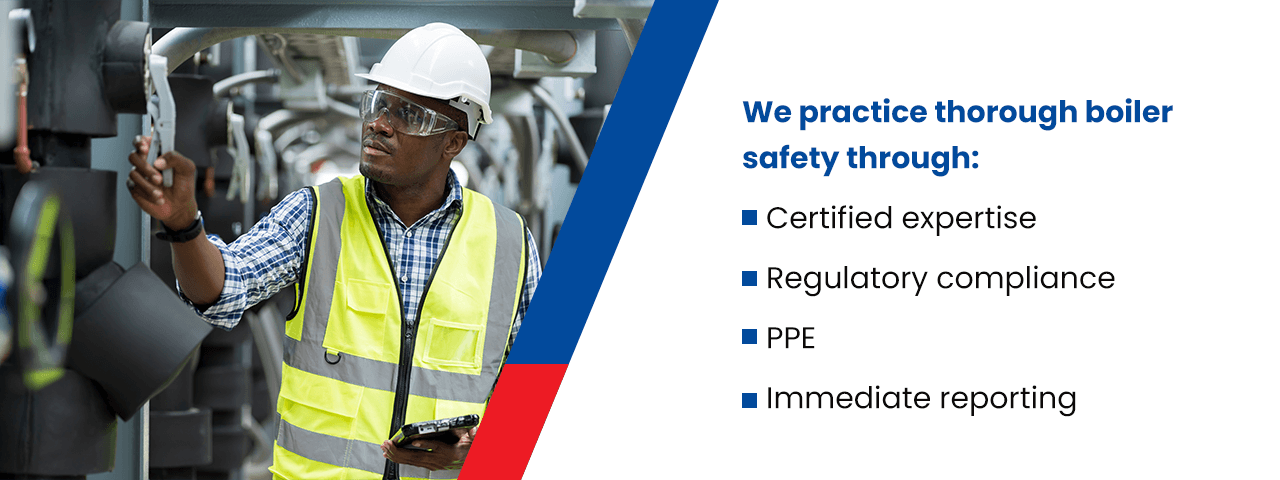
McNeil’s boiler repair services help businesses maintain and repair their boilers. Working with this equipment means establishing procedures to protect employees while they work. We practice thorough boiler safety through:
- Certified expertise: At McNeil, only trained and certified plumbers can perform plumbing and boiler work for our clients. Our team understands plumbing, boiler and electrical safety. Using trained and certified plumbers means you get expertise and quality with every McNeil job.
- Regulatory compliance: McNeil follows all applicable health and safety regulations for plumbing and boiler work. We encourage regular training to ensure our team is updated on safety practices and regulations. We’re dedicated to creating a workplace that prioritizes safety for better service.
- PPE: All McNeil employees involved in plumbing and boiler operations receive and use the necessary PPE, such as goggles, gloves and other protective equipment when needed. The right PPE minimizes the risks associated with these tasks.
- Immediate reporting: We emphasize a proactive approach to safety. McNeil encourages all employees to report unsafe acts and conditions immediately. This approach creates a culture of collective responsibility, boosting safety and project quality.
Fall Protection
At McNeil, ensuring the safety of our team is essential to our operation. Fall protection is a critical aspect of our work — we follow OSHA requirements for fall protection covered in 1926 Subpart M and 1910 Subpart D to ensure we follow industry standards in fall safety. Our comprehensive approach to fall protection includes:
- Fall protection program: Fall protection measures are required at several work sites. McNeil has a dedicated fall protection program with measures and protocols for keeping sites safe. Our program works to reduce hazards, keep employees informed and provide a reference for our team to follow when working.
- Protection program administrator: McNeil’s program administrator designs, oversees and maintains our fall protection program. A dedicated administrator helps keep our program focused and organized for better safety and efficiency.
- Thorough procedures: McNeil provides written fall protection procedures and conducts training in fall protection systems. Our detailed procedures give our team the knowledge to navigate potential fall hazards.
- Qualified onsite personnel: Every work site has qualified personnel with the knowledge, training and authority to help prevent fall injuries. Our qualified individuals have relevant degrees, certificates, training and experience. Qualified personnel review fall safety measures, enforce onsite following of safety procedures and control for hazards to create a secure work environment.
Ladder and Stair Safety
We work to promote safety at every step of the job. From our project focus to job equipment, we train our employees in industry standards for safety to create a safer, more effective workplace. McNeil has ladder and stair safety procedures compliant with OSHA 1926 Subpart X and 1910 Subpart D to help ensure job safety. All McNeil employees receive detailed training to help keep them and others safe on the site. We strive to create a comfortable, safe working environment with our:
- Storage protocols: Proper ladder and stair storage are essential to keeping equipment safe and lasting. Our policy lays out proper ladder storage in designated, dry, ventilated and secure areas. Employees store equipment according to type and get regular checks to ensure safety.
- Maintenance procedures: Routine maintenance is key to our ladder and stair safety measures. Stairs and ladders get regular inspections and care to keep them in top condition. We encourage employees to report damage, defects and hazards to ensure our equipment is at its best. We quickly repair or replace damaged equipment to protect our employees and job sites.
- Hazard recognition: McNeil prioritizes hazard recognition at every turn. Ladders and stairs come with risks, so we train employees on hazard recognition to help protect their safety. Understanding what to look out for helps us stay on top of preventative measures to reduce risk.
- Communication: Our safety culture encourages open communication. If an employee spots a hazard, our policy requires them to report problems to keep everyone safe. This collaboration helps us resolve risks faster for a safer work environment.
Invest in Quality and Safety With McNeil
At McNeil, we’re dedicated to delivering unmatched quality and safety to businesses. Our services cover repair and installation for incinerators, boilers and furnaces and an extensive range of mechanical work. We have decades of experience, so you can count on our team to deliver safe, efficient work every time. Use us for all your custom construction needs and experience exceptional materials and services tailored to your needs. Get a quote for your next project with us online today!
Where Are Fiberglass Gaskets Used?

Fiberglass is a highly durable, heat-resistant sealant. Its flexibility and versatility make it the premier choice for sealing and high-temperature applications across dozens of industries. Gaskets are subjected to extreme conditions — failure can be catastrophic. If you want to ensure safety and efficiency, using one of the many fiberglass sealing options helps protect your product, employees and facility from harm while maximizing productivity.
Explore the various fiberglass products and their uses as gasket materials to find the best fiberglass gasket for your needs.
Fiberglass Cloth
Fiberglass cloth is a woven composite fabric made from fiberglass strands. Using fiberglass makes this material extremely versatile — its flexibility, durability and strength make it applicable across many industries. Fiberglass’ heat and chemical resistance make fiberglass cloth extremely popular for dozens of uses. Thanks to its high strength-to-weight ratio, you’ll see fiberglass cloth used in protective gear like helmets and body armor, surfboard manufacturing and crafting.
With so many uses and benefits, fiberglass cloth is a popular choice for many large industries. Here are some industries that commonly use it in their operations:
- Construction: Fiberglass cloth is employed in the construction industry for reinforcing materials called fiberglass-reinforced plastic (FRP) composites. FRP composites are used to build lightweight, sturdy structures like aircraft parts, boat hulls and car bodies. Additionally, fiberglass cloth is used to reinforce concrete, preventing cracking and enhancing its strength.
- Manufacturing: Another common application for fiberglass cloth is insulation product manufacturing. Fiberglass provides excellent acoustic and thermal insulation in commercial buildings, homes and industrial settings. It improves your energy efficiency and creates a comfortable home or workspace.
- Automotive: The automotive industry uses fiberglass cloth for producing durable parts like hoods, bumpers and interior panels. Fiberglass cloth’s lightweight properties contribute to fuel efficiency while maintaining structural integrity. Additionally, the automotive detailing industry uses it for color contrast and rust resistance.
- Marine: Fiberglass cloth is extremely popular in the marine industry for its high rust and corrosion resistance. Fiberglass is also used in the manufacturing of boat hulls, liners, decks, consoles and more. Even water tanks and pipes commonly incorporate fiberglass into their construction.
- Aerospace: Fiberglass cloth is essential to the aerospace industry. Its lightweight, heat-resistant nature makes it ideal for aerospace test equipment, enclosures and ducting. Fiberglass fabric is also found in jet engines and aircraft interiors.
Fiberglass Tape
Fiberglass tape is made from many twisted fiberglass strands. These fibers are woven together to create highly durable tape. Selvage edges prevent the tape from unraveling. Its strength helps it withstand severe stressors, and its self-adhesive properties make it a convenient, lasting tape for many uses.
There are numerous practical applications for fiberglass tape. Here are some of the industries that take advantage of its beneficial properties:
- Construction: Fiberglass tape is often used for drywall finishing and repairs. When embedded in the joint compound, it reinforces seams between drywall sheets — this prevents cracks and provides a smooth surface for wallpapering or painting. Fiberglass’ moisture resistance makes it useful in damp-prone areas like kitchens and bathrooms.
- Electrical: Fiberglass tape plays a critical role in electrical insulation. Its nonconductive properties make it ideal for wrapping and insulating cables, wires and electrical components. Wrapping components with fiberglass tape helps ensure safety and efficiency in electrical systems.
- Automotive and aerospace: Fiberglass tape is used for composite material reinforcement in both the automotive and aerospace industries. Fiberglass tape helps enhance structural integrity while keeping components’ weight to a minimum for improved performance and fuel efficiency.
- Plumbing: Fiberglass tape works well for repairing leaking pipes and fittings. When coated with adhesive, fiberglass tape is a reliable solution for temporarily sealing leaks until more permanent repairs can occur.
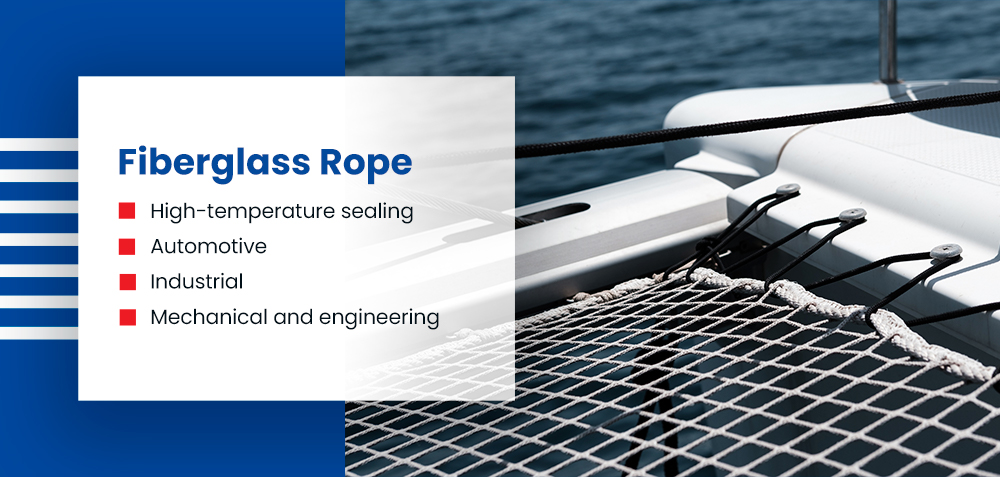
Fiberglass Rope
Fiberglass rope is a woven, nonflammable silica yarn used as sealing and gasket material. Fiberglass rope’s strong, lightweight properties make it useful in many industries across applications, including:
- High-temperature sealing: Fiberglass is heat-resistant and nonflammable, making it a valuable tool for high-temperature sealing and insulation. Fiberglass rope is used to create tight seals in boilers, ovens, furnaces and wood-burning stoves. This prevents heat loss and ensures efficiency.
- Automotive: In the automotive industry, fiberglass rope is employed as a gasket material in exhaust systems and engines. Its ability to withstand extreme temperatures and resist chemical damage makes it ideal for intense environments.
- Industrial: Industrial settings also use fiberglass rope for a variety of applications. One primary use is sealing doors and access points to prevent heat or cold from escaping and control temperature.
- Mechanical and engineering: Fiberglass rope’s durable sealing properties make it an effective protectant against debris, leaks and dust in mechanical and engineering applications.
Fiberglass Tadpole Tape
Fiberglass tadpole tape — or tadpole gasket tape — is a specialized sealing material designed to provide a high-pressure, high-temperature seal for many industrial applications. Tadpole tape gets its name from its unique appearance — its round section and thin tale resemble a tadpole. The bulbous section of tadpole tape is typically made from fiberglass rope to provide advanced heat resistance and compression capabilities. The tail is made from more flexible materials like neoprene, rubber or silicone.
Fiberglass tadpole tape conforms to irregular surfaces. Compressing the bulb creates an insulating seal fixed in place by the tail. It’s used for a few different applications:
- High-temperature: Fiberglass tadpole tape’s flexibility and ability to withstand high pressure and thermal cycling make it popular in critical sealing applications where traditional gaskets might fail. Its extreme temperature resistance lets it work well in boilers, furnaces, high-temperature piping systems and industrial ovens.
- Sealing: The energy, automotive, manufacturing and aerospace industries use fiberglass tadpole tape where reliable sealing against liquid, heat and gas is essential for ensuring safe and efficient equipment and machinery operation. Its unique design and high-performance properties make fiberglass tadpole tape valuable for sealing applications.
Fiberglass Thread
Fiberglass thread is formed by stringing together fiberglass filaments. These filaments usually have an added coating to reduce friction and improve functionality. Stringing fine fiberglass fibers together makes a thread with superior heat resistance and high tensile strength. Fiberglass thread is used in the following applications:
- Composite construction: Fiberglass thread helps reinforce materials like FRPs and creates strong, lightweight structures for the aerospace and automotive industries.
- Fire-resistance: Using fiberglass thread can help improve the fire-resistance of fabrics, protective clothing and filtration systems.
- High-temperature needs: Heat-resistant applications will use fiberglass thread in thermal insulation materials for furnaces, automotive components and industrial ovens.
Use McNeil for All Your Fiberglass Textile Needs
With over 80 years of industrial heat-management construction and installation experience, you can trust McNeil to deliver the lasting, quality materials you need. Our superior fiberglass and silica textiles provide unmatched protection and sealing in high-temperature environments. McNeil’s fiberglass sleeves, cloth, rope and tape all display the low conductivity, high mechanical strength and excellent spark resistance needed to withstand environmental stressors. If you’re interested in our fiberglass textiles or need our repair and installation services, contact us online today.
Should You Replace or Fix Your Commercial Boiler?
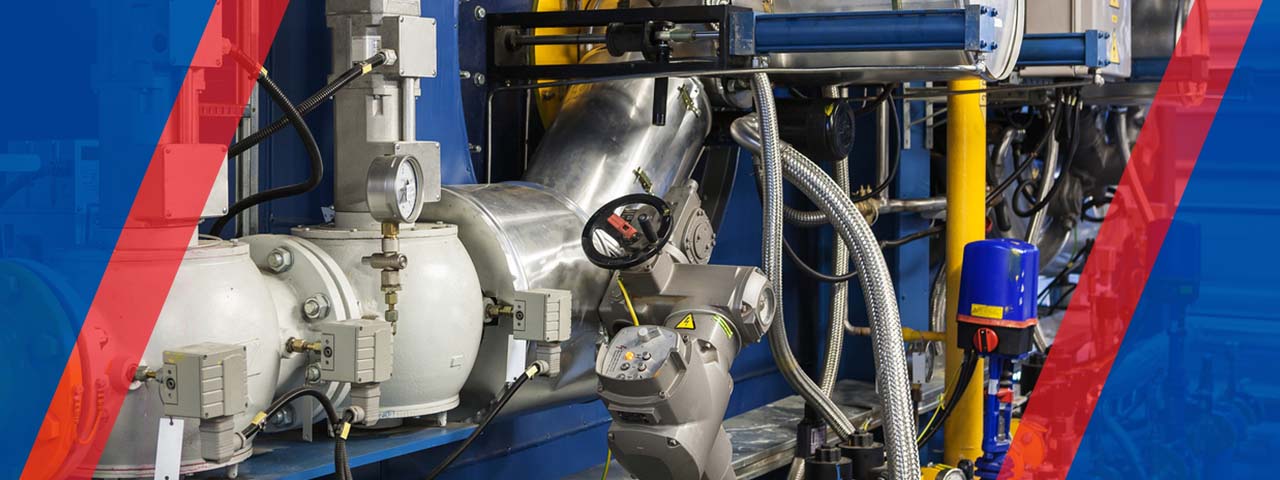
The boiler inside your business needs to be in working order. Pressurized equipment should be monitored to ensure work environments are safe for employees and liquids can be heated accordingly.
If you’re a facility manager, you’ll need to act on commercial boiler maintenance and repairs. Is it better to restore or replace an industrial boiler? The answer will depend on several factors.
Consider the Age of the Boiler
Industrial boilers consume a great deal of energy — the technology runs around the clock to keep your operations moving. It’s important to understand boilers will require replacement at some point. An industrial boiler can last upward of 20-30 years when facility managers schedule regular maintenance.
This estimate is not a guarantee. Expect an increase in maintenance and repair needs for a boiler once the installation approaches or surpasses the manufacturer’s rated service life.
Recurring Repair Needs
Frequent repairs add up. Your business may benefit from a complete boiler replacement when the same issue presents itself repeatedly and your old boiler declines in efficiency. Review maintenance records for your boiler assembly to see whether complications derive from the same components or are widespread.
You may find your industrial boiler starts leaking or grows louder toward the end of its life expectancy. Facility managers can do their part by looking out for buildups and clogs within pipes. How long boiler pipes last will depend on how often they are serviced and environmental conditions. Some areas of a boiler you could see deteriorate are the burner, heat exchanger, combustion chamber and system controls.
Review Boiler Fuel and Energy Costs
Looking at energy use and fuel demands from the time a boiler is installed to the present day is useful for figuring out if you should repair or replace technology. Keep track of facility fuel consumption rates and energy bills to see if there is room for improvement.
Fuel Type Matters
The type of fuel your system needs and how much your plant uses will make it easier to see if repairing or replacing your technology is productive.
Most industrial boilers are powered by coal, oil or natural gas. Coal is becoming less common in the industrial field due to environmental factors. Some businesses choose to integrate boilers that run on biomass, like corn husks and wood chips, to minimize their carbon footprints.
When your industrial boiler runs on a more expensive fuel variety and breaks down often, it’s worth exploring your options for a replacement assembly. Estimating the amount of fuel you’ll use in the future is effective in making the right decision for your plant.
Options for Retrofitting
Maybe your industrial boiler is a few years old but fuel costs are increasing for your build. Facility managers might think about retrofitting their units. This involves changing boiler parts to support a fuel type different than what was intended by the manufacturer.
You could potentially save money by modernizing an industrial boiler with updated parts. Make the transition from solid, liquid or natural fuel to another variety that makes sense for your budget.
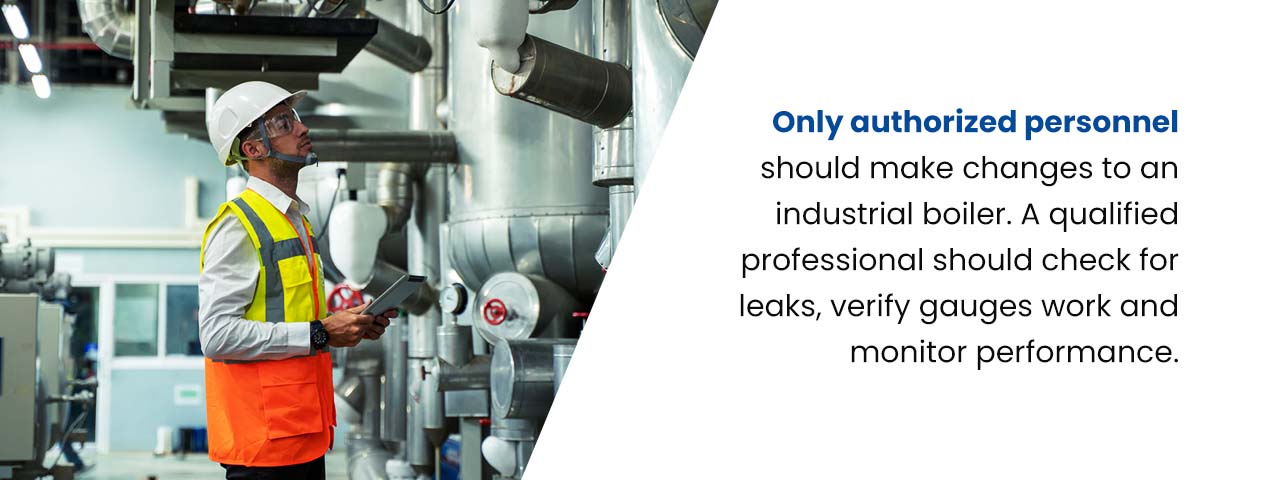
Evaluate Facility Safety Concerns
Look out for your employees when deciding to repair or replace an industrial boiler. Pressurized vessels are dangerous when maintenance intervals are missed. Most boilers feature a pressure relief valve, but there is a chance an unchecked assembly could wear out to the point where superheated steam causes an explosion.
Only authorized personnel should make changes to an industrial boiler. A qualified professional should check for leaks, verify gauges work and monitor performance. Attending to a cracked boiler or rusting surfaces with an experienced technician is essential for creating a safe workplace. The technician you rely on for system inspections should inform you when adding a new unit to your plant is the best course of action.
Boiler Problems to Address Quickly
The following details describe situations when an industrial boiler may fall short of compliance standards:
- Surges and pulsations: There is a chance the burner or combustion fan is disrupting the flow of fuel and air throughout the boiler assembly.
- Boiler stops suddenly: This indicates safety controls have kicked on due to faulty operation controls. Safety features stop the boiler from running to reduce the chances of an accident.
- Temperatures skyrocket: A qualified technician may find a boiler’s operating conditions unsafe because of decreased water levels or poor water quality.
Investigate Boiler Configuration and Efficiency Issues
A popular boiler setup involves having two units in a facility. One boiler is the primary assembly and carries the heating load while the opposite boiler is for emergencies. This configuration works well for heating and power, but it is far from the most efficient.
Boiler technology is capable of changing its firing rate to accommodate different loads. Once a load plummets below an assembly’s minimum rate, it’s common for the unit to power down. The cycling process puts additional stress on boiler parts when temperatures fluctuate. A facility manager might think about adding several small boilers in a plant and configuring them to turn on with increasing loads.
This setup keeps professionals ready for emergencies and eliminates the need for cycling. Improve efficiency and system reliability, as the shutdown of one boiler will not influence heating capacity.
Update Your Boiler for Maximum Productivity
A boiler’s efficiency level is typically lowered the longer the unit is in use. Scale inevitably builds up on burner surfaces, and repairs become more of a short-term fix. Just because a boiler is in working condition does not mean you’re getting the highest level of performance out of the installation. Think about replacing an industrial boiler when there is evidence performance levels are not what they used to be.
Choose McNeil Company for Boiler Installation and Repair Services
The experts at McNeil have been serving customers in the metal, petroleum and chemical industries for over 80 years. Whether you’re interested in upgrading from your existing boiler or you could use assistance with a repair, know we’re here for you with locations in New Jersey, Florida and Virginia.
We work on industrial boilers of all sizes and varieties. There’s a reason why industrial organizations trust us to come up with solutions for facilities — our customers are our top priority, and we won’t rest until you’re satisfied with our services. Ask the McNeil team for a quote to hear more about pricing details.
McNeil USA Wins Top Waste to Energy Solutions Provider 2023

Recently, the technology magazine Energy Tech Review announced their Top 10 Waste to Energy Solutions Providing Companies of 2023, and McNeil USA was one of them! Energy Tech Review wrote a spotlight article highlighting McNeil’s unique approach, complete with quotes from our president, Jim Schuhl Sr. Read the complete article here: https://www.energytechreview.com/mcneil-usa
Industrial Boiler Troubleshooting

Any industry that utilizes boilers can experience issues that lead to boiler problems, bringing operations to a standstill. All boilers are likely to run into issues from time to time. Knowing what common problems can occur, how to troubleshoot them and what your next steps are can help keep your boiler in good condition.
Common Boiler Problems
While boilers are durable industrial machines, they can still break down if a problem occurs. Responding to boiler problems quickly is essential to minimize damage and save money on repairs. Below are a few of the most common boiler problems you could encounter.
1. Leaking Water
Water leaking from the boiler tank is a sign that the interior of the tank is severely eroded. If your boiler tank has corroded, the only solution is to replace the entire tank. While it’s not the most cost effective solution, it lets you prevent further leaking and additional damage.
Some leaks may be from less severe sources, such as a broken expansion tank or pressure relief valve. These problems are usually easy to fix without eating away at your budget.
You may also encounter water leaks from the pipes or other locations. If you’re using a closed system, you can usually identify the source of the leak with a water meter. A water meter will show dropping water levels, which could drop low enough to shut down the system.
2. Blockages or Scale Buildups
Blockages and buildups are other common boiler problems. Poor water quality can lead to calcium and other minerals accumulating as deposits within the pipes and pressure vessels. These deposits can cause interruptions in the water pathway or, in more extreme circumstances, cause complete blockages.
These blockages can cause you to use more fuel than necessary to run the system and can be expensive to repair if they get severe enough. You can prevent them by using a water treatment system to ensure your water maintains its quality.
3. Weak or Slow-Building Pressure
Weak or slow-building water pressure is a sign of a leak somewhere in the boiler system. Leaks in the system can create a buildup of internal force, creating inconsistencies in the heat distribution and water pressure system. You can check for leaks by looking at the valves or pressure vessels.
Low or no pressure can also indicate an issue with the steam trap or feed pump. You should check these components regularly to ensure they work correctly and provide consistent pressure throughout your boiler system.
4. Strange Noises
Boilers that make strange noises — like whistling or pounding — could indicate significant problems. Strange noises can signal that the water pressure is too low or that there’s excessive buildup on the boiler’s heat exchange.
These problems can cause your boiler to work harder than necessary, leading to backed-up internal pressure. You can prevent this issue by ensuring the air intake, exhaust, gas piping and gas pressure are working correctly.
5. Random Shut Offs
Some of the reasons your boiler could shut off by itself include a broken thermostat, a damaged pump, loss of air pressure or blockages. If your boiler is shutting off or won’t turn on, you should schedule an appointment with a professional heating system expert. They’ll identify the source of the problem and have it repaired as soon as possible.

Troubleshooting Boiler Issues
While a boiler technician will know how to troubleshoot an industrial boiler, you may be able to find the source of some boiler problems yourself. Some ways you can troubleshoot boiler issues include:
- Check the pressure: Some boiler issues only require minor adjustments to the temperature or pressure. However, high pressure can lead to significant problems. The proper setting depends on the boiler’s system and usage. You’ll want to check the requirements for your specific boiler before making any adjustments.
- Check water treatment: You should check the boiler water daily to prevent premature leaks and vessel damage. Catching potential leaks or poor water quality early can help prevent significant issues that can damage your boiler.
- Check the gauge: A faulty gauge can sometimes cause issues in your boiler experience. If your boiler is still reaching the appropriate heat and your building is getting heat as usual, you may only need to replace the gauge. However, you’ll want to ensure you get the appropriate gauge for your building or industrial site’s system and boiler.
- Perform regular maintenance: Regular maintenance is one of the best ways to troubleshoot boiler issues. Keeping up with scheduled inspections and regular tuneups can help you catch problems early, saving you time and money. Periodic maintenance also optimizes your boiler’s performance so it can continue to run smoothly for years to come.
- Use a boiler interface or monitoring system: Some boilers have user-friendly interfaces that keep track of boiler conditions and notify boiler operators if any readings are irregular. The interface will also provide solutions to some problems so you can fix them as soon as possible. A monitoring system can also report on specific information to help you troubleshoot specific issues, allowing you to fix them before they worsen.
Next Steps
Once you identify the problem, the next essential step is to fix the issue and preserve the health of your boiler. If you’ve found a problem with your boiler, you should contact an expert as soon as possible. A professional can help confirm the issue and provide the proper solutions, optimizing your boiler’s performance while preventing expensive repairs. They can also perform boiler repair quickly and efficiently, ensuring that your boiler will continue to serve for as long as possible.
While a professional is vital for essential repairs, performing regular preventive maintenance can reduce how much you need them. Once your boiler problems are resolved, regular maintenance is crucial to prevent additional issues from occurring. While industrial boilers should follow an annual maintenance schedule, you may need additional maintenance depending on your usage.
Contact McNeil for Boiler Repair
If you’re experiencing trouble with your boiler, McNeil can help. We offer boiler repair services to reduce disruptions and improve your boiler’s efficiency. We can help keep your boiler performing its best, whether it’s electric or gas-powered.
Some of our boiler repair services include refractory repair, maintenance and inspections, boiler cleaning, component and vessel repair or boiler replacement. We can even install a new boiler if it’s time for an upgrade or if the damage has made it impossible to use your current boiler. Contact us today to get started with a free quote!
How Do Commercial Boilers Work?
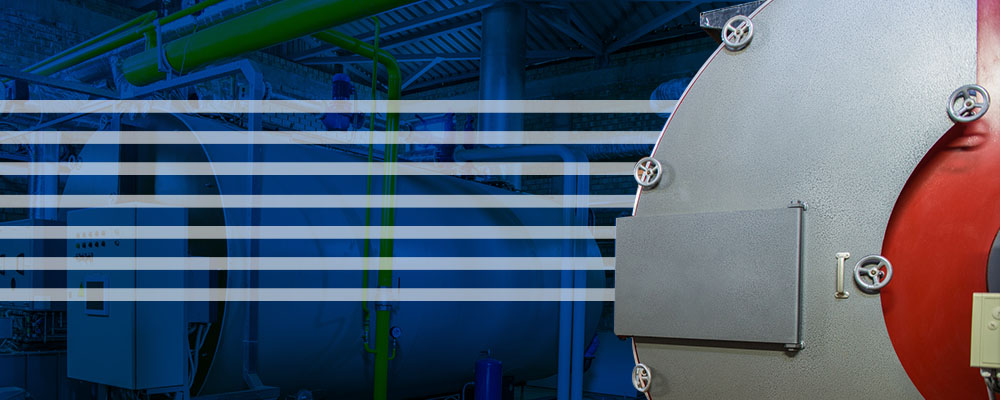
A commercial boiler contains water and transfers heat from a fuel source, such as gas, oil or coal, into steam. The steam is piped to a specific location, allowing it to run equipment, sterilize, steam-clean or provide heat. These boilers are essential to transfer heat energy from one place in your business to another, allowing everything to operate efficiently.
Some commercial boilers use an open system, which allows the steam to return to water form and be reused for different functions. Other boilers run on a closed system, meaning they don’t return the steam to water where it can be reused.
Below, you’ll learn more about how industrial boilers work, the types of boilers and other high-pressure steam boiler basics to help you operate your building’s equipment effectively.
Parts of a Commercial Boiler
Generally, commercial boilers contain the same parts and components essential for effective heating. Some of the standard components of a commercial boiler include:
- Burner: The burner is responsible for providing the flames that heat the water in the vessel. The burner helps create a mixture of fuel and oxygen, allowing the fire to burn efficiently and consistently.
- Combustion chamber: This is the area in the boiler where fuel burns to assist with heating the water. The combustion chamber is where the burners are located and is designed as a secure and safe location for the combustion of volatile fuel at high temperatures. Typically, combustion chambers are made from steel, cast iron or other heavy-duty metals.
- Heat exchanger: This vital component transfers the burners’ heat to the water, allowing it to create steam. Heat exchangers are usually made of copper, steel, cast iron or heavy-duty metal.
- Exhaust stack: This component is also called the flue. It consists of a series of pipes that carry exhaust fumes away from your facility’s interior and outside. An exhaust stack must be carefully constructed to ensure toxic fumes, such as carbon monoxide, are safely removed from your facility’s interior.
- Controls: System controls are an essential part of a commercial boiler, allowing you to set the water temperature, internal pressure, ignition, and fuel and air supply mixtures. You can control how often your burner fires, the rate at which your fuel is used and the quality of the fuel and oxygen mixture. The controls have safety features, allowing you to ensure your system stays operational.
All of these components are essential to a boiler, allowing it to operate safely and efficiently within your business. Without one of these components, your boiler couldn’t provide heating or other essential functions to your commercial enterprise.
How a Commercial Boiler Operates
There are different commercial boilers you can use. However, most boilers work similarly, using burning fuel or electricity to create heat and provide a hot water supply to a building. Depending on the type of system, the boiler may produce steam or hot water, which is then circulated in the pipes within a commercial facility.
Electric coils or fuel burners create heat in a boiler, which is transferred to the water from the heat exchanger. The hot water or steam travels through pipes within the building to the designated area. The water or steam enters the radiators of other heating systems in the building to disperse the warmth, allowing you to keep a space at your desired temperature.
The end goal of a commercial boiler is to produce consistent heat within a commercial building, whether it’s an office, medical facility, apartment complex or school.
Commercial Boiler Maintenance and Safety Tips
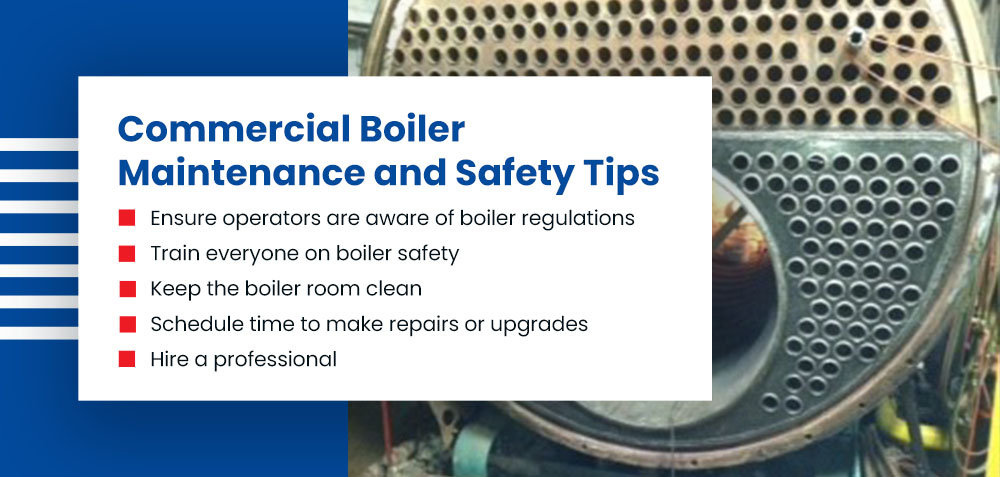
Remember that boilers contain steam or hot water under high pressure, so boiler maintenance is essential to sustain your boiler’s life span. You must take the proper steps to ensure your boiler stays clean and works correctly.
Hot water or steam leaks can cause significant damage or injuries. In some cases, boilers can explode when not adequately maintained, creating the potential for severe injuries or death.
You can follow some of the tips below to keep your boiler properly maintained:
- Ensure operators are aware of boiler regulations: Boiler operation regulations vary by state. For example, most states require your boiler to be inspected yearly, but some don’t. You should make any rules or regulations available to anyone who comes in contact with the boiler to ensure they follow protocol.
- Train everyone on boiler safety: While boiler explosions are rare, they can still happen. It’s essential to train operators on boiler safety, so they know what to look for, including temperature and water or pressure levels. They should also be able to spot signs of corrosion to ensure it’s handled correctly and quickly.
- Keep the boiler room clean: An unorganized or dirty boiler room can create a hazard. You also don’t want to store any flammable materials in a boiler room for the same reason. You should also consider restricting access to the boiler room to technicians and operators who have training in basic boiler safety so you don’t risk injuries and the area stays clean.
- Schedule time to make repairs or upgrades: A boiler requires repairs and upgrades throughout its lifetime. You may need to schedule some downtime for these repairs or upgrades, which means you can use rental boilers while yours is being repaired or upgraded. Even with a rental boiler, you’ll still need to inspect it regularly to ensure everything is working.
- Hire a professional: You should hire a professional to conduct your maintenance and repairs to ensure your boiler is taken care of properly. Professionals have the experience and knowledge to perform high-quality maintenance and repairs when necessary efficiently.
Schedule Boiler Installation or Repair With McNeil
If you need professional help with boiler installation or repairs, McNeil is here to help. We offer high-quality boiler installation services to help you install complex equipment that’s efficient and safe for your commercial processes.
We also offer boiler repair services when your boiler needs maintenance or repairs for specific components. We can work on all commercial boilers, whether you use electricity, gas, hot water or steam.
You can utilize our repair and installation services from any of our Florida, Virginia, or New Jersey facilities. When you choose us, you can rest assured we’ll exceed your expectations and help you keep your commercial operations functional.
Contact us today to learn more about our boiler services or get a quote!
Boiler Maintenance Checklist

When was the last time your boiler was checked? If you can’t remember, it’s probably time to schedule some routine boiler maintenance. Just like cars, boilers also need a tuneup every so often. In addition to making sure everything is functioning, scheduling boiler maintenance is the best way to prevent future malfunctions, increasing the longevity of your heating system.
So, how often should you get boiler maintenance, and what exactly needs to be checked during routine maintenance? The following boiler maintenance checklist will provide all of the information you need to ensure your heating system is running at its peak for years to come.
What Requires Regular Maintenance on a Boiler?
Every boiler system has various parts and devices that are essential to maintaining the system’s safety and efficiency. To ensure the safe operation of your boiler, all fittings must be checked and maintained properly. In addition, electrical components, combustion ability and safety sensors should also be checked often. There are a lot of elements of a boiler that should be checked, and below is a list of a few of the most important boiler checklist items:
- Pressure gauges: To ensure the safety of those in proximity to a boiler, pressure gauges must give accurate readings. When they don’t, they need to be replaced immediately. The observation of gauges should be done frequently — ideally daily or weekly — and can be tested easily using special equipment.
- Steam traps: These function to remove excess water, air and condensation without removing steam from a steam boiler. When broken, steam traps will either close completely and not remove any condensation, causing erosion and damage to the system, or open completely, allowing for the free flow of steam, wasting energy. These systems should be checked at least several times a year, as they’re integral to the efficiency of boilers.
- Insulation: A significant amount of energy can be saved by periodically checking the boiler system pipe insulation. Improper insulation can unnecessarily cost thousands of extra dollars in energy. Periodically check the insulation using proper technology.
- Valves: There are many valves that control various aspects of a boiler room system, from steam to hot water. Malfunctioning valves can rack up high energy costs, so you should check them weekly using a thermal imager.
- Pumps: A boiler operates through the function of several pumps. These systems should function properly, as a leak or failure of just one pump can shut down the entire boiler system. Different pumps can be tested using a variety of methods and technologies. These tests and checks should be done at least monthly.
How Often Should You Perform Maintenance on a Boiler?
There are various maintenance checks you should perform on a boiler system on a regular basis. These checks range from simply looking at a physical component visibly to taking apart the majority of the system and using equipment to clean and test for more serious issues.
In short, there isn’t a simple answer for how often boiler maintenance should be performed. However, if we dive deeper into what goes into routine maintenance, we can better understand frequency requirements.
What and How Often to Check When Performing Boiler Maintenance
In order to know what to check and how often to do so, it’s important to categorize elements of the boiler system by maintenance importance. While you don’t need to check everything daily, you do have to perform some daily inspections. To more easily understand the various types of maintenance, the components of boiler operation you should check and the frequency of boiler maintenance, let’s break it down by prevalence:
1. General/Daily Maintenance
While you can perform more thorough maintenance on a less frequent basis, there are daily boiler operation checks you should do to ensure the safety and functionality of the boiler system. These checks can be as simple as looking to see that the pressure and temperature are within normal range and checking for any strange noises, smells or leaks, and reporting them if any are found.
2. Weekly Maintenance
On a weekly basis, you can also perform certain preventative maintenance checks. These checks can include checking the burner and draft controls, the air damper on the burner, valve operation and the igniter. Additionally, you can perform tests to make sure the system has an appropriate response to flame failure, shutdowns and other situations.
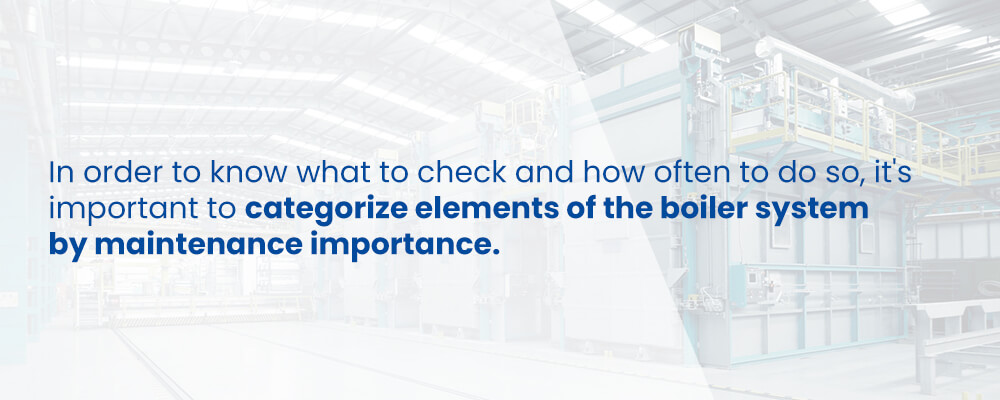
3. Monthly Maintenance
If you’re already performing daily and weekly maintenance checks, your monthly boiler maintenance can be more detail-oriented. When doing monthly maintenance, test limit and flame detection controls, check blowdown and observe floor drains and air inlet screens to rule out any issues with obstruction.
4. Yearly Maintenance
If you can’t perform routine maintenance for your boiler room more frequently, you must complete annual boiler maintenance. During this maintenance, a licensed professional should inspect the heating system, performing several rigorous tests to verify the functionality and safety of the boiler.
The LWCO and ALWCO should be disassembled and checked for blockages, corrosion and defects. Additionally, settings should be checked for accuracy — if not reset — and the fire side should be checked for soot and damage and the water side should be checked for corrosion. Clean the entire boiler inside and out, as well.
Why Follow Maintenance Best Practices
If your boiler is working correctly, you may be wondering why it’s recommended to perform maintenance so frequently. When thinking about boiler and heating system maintenance, it’s important to remember the main purpose of boilers. This is heavy equipment, often responsible for heating the entirety of large buildings. These systems operate under extreme temperatures and working conditions.
Therefore, it’s necessary to ensure your boiler is subject to routine maintenance to guarantee reliability and safety. There are many reasons for and benefits to frequent boiler operation maintenance, including:
- Reliability: Depending on the facility where a boiler is housed, it may be in charge of heating a building full of people, such as a school, or responsible for the operation of machinery for an industrial processing operation. No matter what purpose a boiler has, it’s necessary to have a reliable source of heat and power at all times to maintain regular operations. Routine boiler maintenance can ensure all systems operate correctly, preventing any downtime or other issues.
- Efficiency: All machines are subject to wear and tear, and although it may not seem like a problem, minor issues like leaks or corrosion can lead to more fuel usage, costing you more money than necessary and causing larger problems. The more frequently your boiler is checked, the less often these problems will occur.
- Longevity: Small problems build up over time and can eventually lead to premature wear or breakage of the heating system. Breaks can also occur in individual parts, causing you to purchase a new system or replace an expensive part. Frequent boiler system checks can prevent these decisions from being made in the first place — routine maintenance is the best way to increase the longevity of your heating system.
- Safety: While longevity and efficiency are important, the biggest concern when it comes to boiler failures is the safety of others. There are usually a significant number of people in buildings with boiler systems, so any breakdowns could potentially endanger the lives of hundreds of people. By inspecting your boiler operation routinely, you can ensure that the system meets legal requirements and keeps your workers safe.
It’s essential to all aspects of your operation that your heating system is functioning properly. The proven way to optimize all of these important elements is through routine boiler maintenance. Performing regular inspections of equipment can ensure you can continue operations as normal while making sure workers are safe for years to come.
Contact McNeil Today for Boiler Maintenance Services
At McNeil, we provide high-quality materials and customer service for all radiant heat system management needs. Whether you need new refractory shapes or an entirely new boiler room operation, we’re ready and willing to help whenever you need it. Keep your operation up and running with McNeil’s maintenance services — whether it’s monthly or yearly tuneups, we’ll do what it takes to preserve your steam boilers or gas boilers.
Contact us today to learn more about our boiler maintenance and installation services and how they can help you.
Maintenance In Progress: Our Team at Work
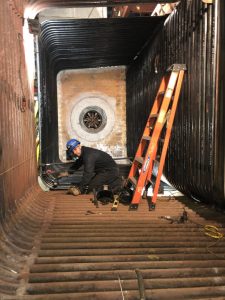
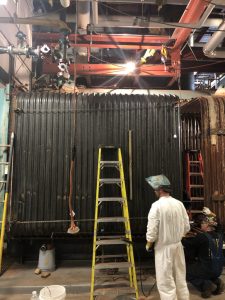
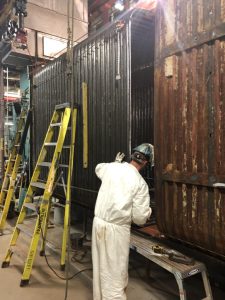

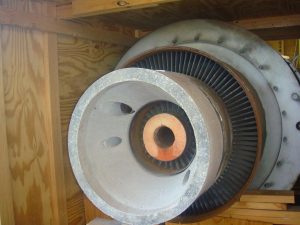
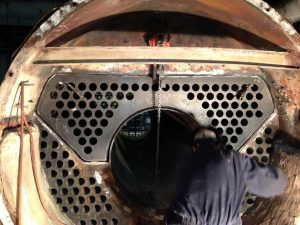
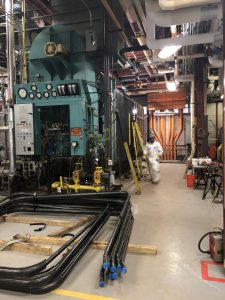
Annual Steam Boiler Open and General Maintenance
One of the essential parts of maintaining industrial steam boilers is the annual steam boiler open. You can schedule maintenance checks every one to two years, depending on the kind of steam boiler you have.
High-pressure steam boilers — those above 15 psi — need inspections at least once a year to maintain their function. Low-pressure systems can perform well with assessments every two years. Your steam boiler technician will address a few standard issues during the maintenance check and ensure that your system is ready to work until the next inspection.
Steam Boiler Maintenance Inspection
You should open your boiler before the inspection so that the technician has easy access to the system’s interior. Remove the front and rear doors on the fire side. On the water side, remove the oblong plates covering the hand holes, which are only used for inspection purposes. The technician will perform two sets of inspections on each side.
Be sure to remove all caps from the low water cut-off and the manway hole on top of the boiler before the technician arrives. Your technician should easily access all parts of the boiler, including the main water line and tubing. After the boiler is open, the technician will check both components.
Water Side Inspection
Scale, sediment and other buildup are common on the water side. Your technician will look for signs of buildup within the boiler and on the connecting lines. This buildup can:
- Increase fuel demand for the same output.
- Hinder valve movement.
- Create incorrect readings on sight glasses.
Your technician will also check for pitting in the tubes. Pitting occurs from oxidation or chemical interactions and results in small depressions in the tubing. If left untreated, pitting can lead to leaking, and you may need to replace the tubes in your boiler.
Fire Side Inspection
On the fire side, the technician will check for soot buildup. Soot buildup impacts heat transfer, much like sediment buildup on the water side. A 1/8 inch buildup of soot can cause a 47% heat loss in a standard boiler. Your boiler will have to work harder to produce the same amount of heat, which leads to more energy use and higher costs.
The boiler technician will also check the refractory material and the tube sheet. They will look for cracks and other signs of damage that could lead to leaks. If there are signs of wear, they’ll perform a magnetic particles test to make sure the internals are safe and detect any potential leaks.
After the inspection, you can put your boiler back together. We recommend using new gaskets after every inspection to ensure optimal performance throughout the following year.
Contact McNeil for More Information
McNeil provides high-quality construction materials and heat management solutions. We’ve provided superior service and supplies for furnaces, boilers and incinerators since 1937. If you need an expert’s advice to find suitable materials for your equipment, we can help.
Contact us online today to find out more about our services and learn how to care for your boiler throughout the year.
Why Boiler Tube Repair Is Important
Boiler tubes are the primary sources of heat transfer in any boiler system. The type of system you have changes the layout, but all boilers must transfer heat from the fire side to the water side. The tubes handle that transfer and steam release for the entire system.
Regardless of your industry, boiler tube maintenance and repair are crucial for consistent outputs. Repairing your boiler tubes can increase the overall life of your boiler system. Plus, finding a solid maintenance and repair routine will keep your equipment in premium condition.
2 Types of Tube Boilers
The two different types of boilers are:
1. Water Tube Boiler
In water tube boilers, exhaust travels through narrow tubes to transfer heat circulating through tubes between two larger drums. The advantages of using water tube boilers include higher steam release capabilities, a smaller energy footprint and a higher operating pressure range.
2. Fire Tube Boiler
Fire tube boilers are pressure vessel boilers that pass gas or exhaust through tubes to heat the surrounding water with a simple design and larger tubes than water tube boilers. The benefits of fire tube boilers include lower upfront costs, ease of maintenance and higher water volume.
Consequences of Poor Maintenance
Maintaining your boiler system can improve its overall health. Without proper maintenance checks, minor issues quickly develop into expensive repairs.
Common consequences include:
- Boiler tube failure
- Personnel risks
- Inefficient outputs
- Increased downtime
The more regularly you inspect your boiler system, the less likely it is that you will experience these issues.
What Causes Boiler Tube Failure?
Many different factors can cause boiler tube failure, but a few reasons apply to both fire and water tube boilers. Some common reasons for boiler tube failure are:
- Poor water quality and treatment.
- Tubes extending beyond code allowances.
- Excessive water side scale or fire side soot.
Addressing these causes with regular maintenance checks can prevent future retubing procedures.
Boiler Tube Repair Process
A certified technician should perform all boiler tube repairs. When a technician completes the boiler tube replacement, they can tell you what caused the issue.
The basic steps for a boiler tube repair are:
- Assess the failure and determine the best course of action.
- Remove the broken tube and determine the failure cause to prevent further repairs.
- Review the tube’s condition and the connection spots to check for any other signs of wear.
- Connect the new boiler tube following code requirements.
- Perform a pressure test that addresses code levels to make sure the tube is installed correctly.
- Complete any repair forms and reinstall the boilerplate.
Save your boiler from unnecessary boiler retubing and schedule maintenance with a reliable repair company.
More Information From McNeil, Your Heat Solutions Repair Company
McNeil provides high-quality heat solutions and materials. We have helped our customers improve their boiler systems since 1937, so we can offer expert advice and help you find the appropriate solutions and products for your needs.
For more information about boiler repair and maintenance, contact the McNeil team online.



